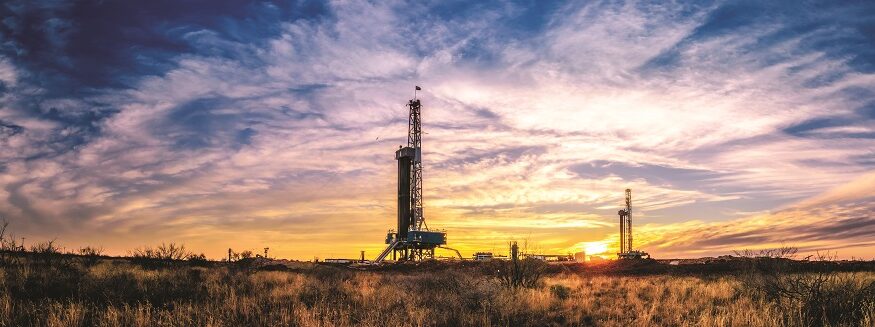Addition by Extraction
November’s Prop 112 battle stirs memories of past oil and gas dependence
Allen Best //February 26, 2019//


Addition by Extraction
November’s Prop 112 battle stirs memories of past oil and gas dependence
Allen Best //February 26, 2019//

“Jobs Matter,” the red-and-white yard signs declared against Proposition 112, the proposal to push back drilling 2,500 feet from homes, businesses and waterways rejected by Colorado voters in November. Opponents had warned that between 33,500 and 43,000 jobs would be lost in the first year and up to 147,800 jobs by the year 2030 if the measure passed. Tax revenues would be clipped, too, according to the study conducted by the REMI partnership, by up to $1.1 billion by 2030.
All of which begged the question: Has Colorado’s economy become overly dependent on oil and gas? The Colorado Oil & Gas Association says members are the foundation for 9 percent of the gross domestic product in Colorado. In Weld County, the central area for what is called the Niobrara-Codel resource play, oil and gas operations would seem to have a much larger role. In Denver or in rural areas, the jobs pay well. The state’s natural resources and mining sector – which also includes coal and molybdenum mining — pays outsized wages, an average $118,425, more than double the state average, according to the 2019 Colorado Business Economic Outlook. Still, the sector constitutes only 1 percent of Colorado’s employment.
The Outlook, a publication of the Leeds School of Business at the University of Colorado Boulder, reports that oil and gas employment since 2016 has also surged 23 percent. Pushing up rigs and jobs totals has been a ride in worldwide prices for oil. The Outlook projected that Colorado’s oil and gas production in 2018 would total $9.9 billion — about 62 percent higher than in 2017. Crude production for 2018 was projected to increase 20 percent over the all-time record of nearly 132 million barrels in 2017. At this rate, Colorado was responsible for nearly 5 percent of the total crude produced in the United States.
Impressive numbers. But does this growing reputation as an important oil patch in the global economy leave Colorado uncomfortably dependent upon drilling forevermore?
Those who have been around Colorado for a few years have undoubtedly heard about the dark times of the 1980s. If Colorado’s economy always bobbed up and down, the 1980s were special, in no pleasant way. In the 1960s and 1970s, baby boomers flocked to Colorado, much as millennials have of late. But in 1986, more people left than arrived. In 1985, Colorado led the nation in business failures. The state’s economic gloom for the decade was second only to that of the 1930s, the time of dust, drought and depression.
Extractive industries, particularly energy, were fingered as the trigger for the problems in the 1980s. Colorado had been crawling with geologists as the decade opened, among them a new arrival named John Hickenlooper. The oil embargo of 1973 followed by the market shock caused by the Iranian revolution and associated drop in production had unleashed a furious push to develop oil domestically. On the Western Slope, ExxonMobil threw buckets of money into the decades-old quest to extract energy from shale deposits in the Piceance Basin between Rifle and Rangely. Downtown Denver sprouted towering buildings, among them the iconic 698-foot-tall Wells Fargo Center, more popularly called the Cash Register Building, completed in 1983.
But even then, Colorado’s economy was troubled. Climax Molybdenum, the mainstay of Leadville, had closed in late 1981, idling 2,000 employees. By then, oil spigots around the world had been opened. On May 2 of that year, ExxonMobil pulled the plug on its oil-shale venture, an announcement remembered as Black Sunday. Real estate values from Glenwood Springs to Grand Junction plummeted, and languished until after Bill Clinton became president.
Colorado is a different place now, says Brian Lewandowki, associate director of the Business Research of the Leeds School of Business at the University of Colorado Boulder. Even recent history indicates a more resilient economy. He points to the 2014-2016 downturn in oil price. Crude oil prices swooned from more than $200 per barrel in 2014 down to the mid $20s by early February 2016. The drilling rigs along the Northern Front Range, primarily on the east side of U.S. Highway 287, mostly disappeared. The drop in exploration and production dragged but did not stall the state’s economy.
“We had something like 1.6 percent growth in gross domestic product,” Lewandowski says. “This says that when prices went south, the mining economy had some sort of pull on the Colorado economy. We didn’t go into a recession. We had a little bit of GDP growth. It coincided with the steep decline in the energy sector.”
But in Weld County, the gross domestic product actually fell in 2016. Lewandowski says that’s evidence that while the Greeley area has become more diversified economy, it remains very dependent upon energy. But again, he sees diversification where before there was much less. “It’s not all just energy and it’s not all just agriculture. So there’s something else once this plays out,” he says.
Proposition 112 was defeated by a 3-to-1 margin in Weld County. The oil boom has left the county — one of the fastest-growing in the nation — flush. Weld County government is among just a handful of county governments in the nation without debt, says Rich Werner, chief executive of Upstate Colorado Economic Development. He says approval of the proposition, which opponents said would have left 85 percent of private land off limits for drilling, would have been “devastating” to the Greeley-area economy, just as any substantial reduction in any industry would be devastating. Still, he says economic diversity has helped cushion some of the fluctuations in both oil and agriculture prices.


























